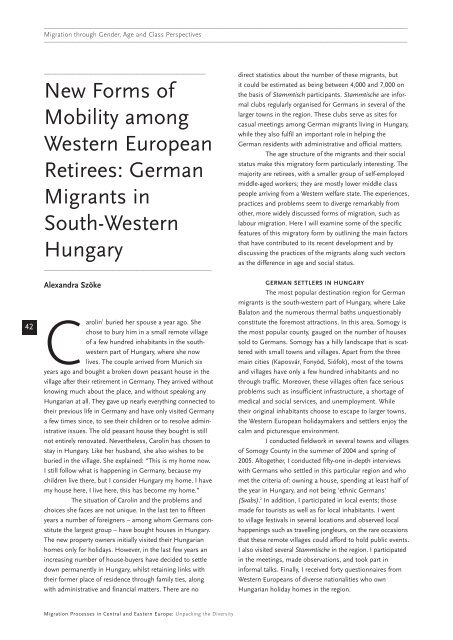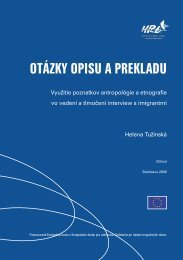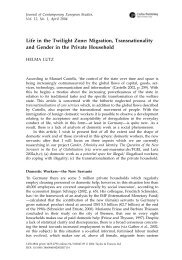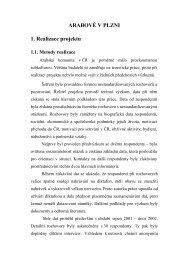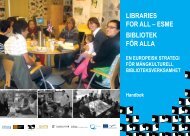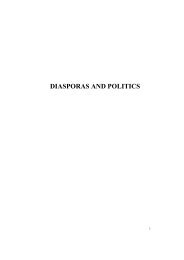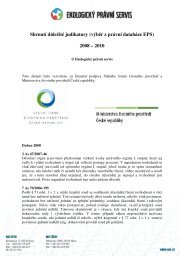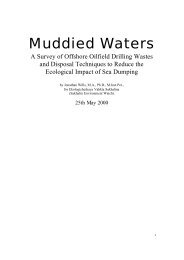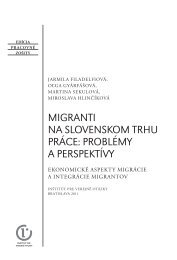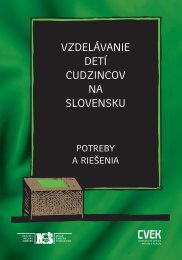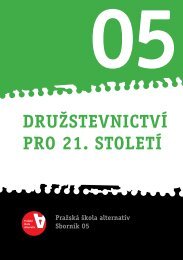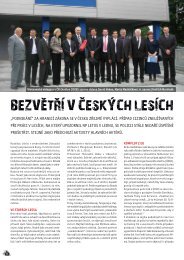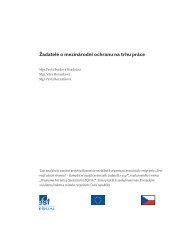Migration Processes in Central and Eastern Europe - Multiple Choices
Migration Processes in Central and Eastern Europe - Multiple Choices
Migration Processes in Central and Eastern Europe - Multiple Choices
Create successful ePaper yourself
Turn your PDF publications into a flip-book with our unique Google optimized e-Paper software.
———————————————————————————————————————————————————————————————<br />
<strong>Migration</strong> through Gender, Age <strong>and</strong> Class Perspectives<br />
———————————————————————————————————————————————————————————————<br />
42<br />
————————————————————————————<br />
New Forms of<br />
Mobility among<br />
Western <strong>Europe</strong>an<br />
Retirees: German<br />
Migrants <strong>in</strong><br />
South-Western<br />
Hungary<br />
—————————————————————————————<br />
Alex<strong>and</strong>ra Szõke<br />
Carol<strong>in</strong> 1 buried her spouse a year ago. She<br />
chose to bury him <strong>in</strong> a small remote village<br />
of a few hundred <strong>in</strong>habitants <strong>in</strong> the southwestern<br />
part of Hungary, where she now<br />
lives. The couple arrived from Munich six<br />
years ago <strong>and</strong> bought a broken down peasant house <strong>in</strong> the<br />
village after their retirement <strong>in</strong> Germany. They arrived without<br />
know<strong>in</strong>g much about the place, <strong>and</strong> without speak<strong>in</strong>g any<br />
Hungarian at all. They gave up nearly everyth<strong>in</strong>g connected to<br />
their previous life <strong>in</strong> Germany <strong>and</strong> have only visited Germany<br />
a few times s<strong>in</strong>ce, to see their children or to resolve adm<strong>in</strong>istrative<br />
issues. The old peasant house they bought is still<br />
not entirely renovated. Nevertheless, Carol<strong>in</strong> has chosen to<br />
stay <strong>in</strong> Hungary. Like her husb<strong>and</strong>, she also wishes to be<br />
buried <strong>in</strong> the village. She expla<strong>in</strong>ed: “This is my home now.<br />
I still follow what is happen<strong>in</strong>g <strong>in</strong> Germany, because my<br />
children live there, but I consider Hungary my home. I have<br />
my house here, I live here, this has become my home.”<br />
The situation of Carol<strong>in</strong> <strong>and</strong> the problems <strong>and</strong><br />
choices she faces are not unique. In the last ten to fifteen<br />
years a number of foreigners – among whom Germans constitute<br />
the largest group – have bought houses <strong>in</strong> Hungary.<br />
The new property owners <strong>in</strong>itially visited their Hungarian<br />
homes only for holidays. However, <strong>in</strong> the last few years an<br />
<strong>in</strong>creas<strong>in</strong>g number of house-buyers have decided to settle<br />
down permanently <strong>in</strong> Hungary, whilst reta<strong>in</strong><strong>in</strong>g l<strong>in</strong>ks with<br />
their former place of residence through family ties, along<br />
with adm<strong>in</strong>istrative <strong>and</strong> f<strong>in</strong>ancial matters. There are no<br />
direct statistics about the number of these migrants, but<br />
it could be estimated as be<strong>in</strong>g between 4,000 <strong>and</strong> 7,000 on<br />
the basis of Stammtisch participants. Stammtische are <strong>in</strong>formal<br />
clubs regularly organised for Germans <strong>in</strong> several of the<br />
larger towns <strong>in</strong> the region. These clubs serve as sites for<br />
casual meet<strong>in</strong>gs among German migrants liv<strong>in</strong>g <strong>in</strong> Hungary,<br />
while they also fulfil an important role <strong>in</strong> help<strong>in</strong>g the<br />
German residents with adm<strong>in</strong>istrative <strong>and</strong> official matters.<br />
The age structure of the migrants <strong>and</strong> their social<br />
status make this migratory form particularly <strong>in</strong>terest<strong>in</strong>g. The<br />
majority are retirees, with a smaller group of self-employed<br />
middle-aged workers; they are mostly lower middle class<br />
people arriv<strong>in</strong>g from a Western welfare state. The experiences,<br />
practices <strong>and</strong> problems seem to diverge remarkably from<br />
other, more widely discussed forms of migration, such as<br />
labour migration. Here I will exam<strong>in</strong>e some of the specific<br />
features of this migratory form by outl<strong>in</strong><strong>in</strong>g the ma<strong>in</strong> factors<br />
that have contributed to its recent development <strong>and</strong> by<br />
discuss<strong>in</strong>g the practices of the migrants along such vectors<br />
as the difference <strong>in</strong> age <strong>and</strong> social status.<br />
GERMAN SETTLERS IN HUNGARY<br />
The most popular dest<strong>in</strong>ation region for German<br />
migrants is the south-western part of Hungary, where Lake<br />
Balaton <strong>and</strong> the numerous thermal baths unquestionably<br />
constitute the foremost attractions. In this area, Somogy is<br />
the most popular county, gauged on the number of houses<br />
sold to Germans. Somogy has a hilly l<strong>and</strong>scape that is scattered<br />
with small towns <strong>and</strong> villages. Apart from the three<br />
ma<strong>in</strong> cities (Kaposvár, Fonyód, Siófok), most of the towns<br />
<strong>and</strong> villages have only a few hundred <strong>in</strong>habitants <strong>and</strong> no<br />
through traffic. Moreover, these villages often face serious<br />
problems such as <strong>in</strong>sufficient <strong>in</strong>frastructure, a shortage of<br />
medical <strong>and</strong> social services, <strong>and</strong> unemployment. While<br />
their orig<strong>in</strong>al <strong>in</strong>habitants choose to escape to larger towns,<br />
the Western <strong>Europe</strong>an holidaymakers <strong>and</strong> settlers enjoy the<br />
calm <strong>and</strong> picturesque environment.<br />
I conducted fieldwork <strong>in</strong> several towns <strong>and</strong> villages<br />
of Somogy County <strong>in</strong> the summer of 2004 <strong>and</strong> spr<strong>in</strong>g of<br />
2005. Altogether, I conducted fifty-one <strong>in</strong>-depth <strong>in</strong>terviews<br />
with Germans who settled <strong>in</strong> this particular region <strong>and</strong> who<br />
met the criteria of: own<strong>in</strong>g a house, spend<strong>in</strong>g at least half of<br />
the year <strong>in</strong> Hungary, <strong>and</strong> not be<strong>in</strong>g 'ethnic Germans'<br />
(Svabs). 2 In addition, I participated <strong>in</strong> local events; those<br />
made for tourists as well as for local <strong>in</strong>habitants. I went<br />
to village festivals <strong>in</strong> several locations <strong>and</strong> observed local<br />
happen<strong>in</strong>gs such as travell<strong>in</strong>g jongleurs, on the rare occasions<br />
that these remote villages could afford to hold public events.<br />
I also visited several Stammtische <strong>in</strong> the region. I participated<br />
<strong>in</strong> the meet<strong>in</strong>gs, made observations, <strong>and</strong> took part <strong>in</strong><br />
<strong>in</strong>formal talks. F<strong>in</strong>ally, I received forty questionnaires from<br />
Western <strong>Europe</strong>ans of diverse nationalities who own<br />
Hungarian holiday homes <strong>in</strong> the region.<br />
<strong>Migration</strong> <strong>Processes</strong> <strong>in</strong> <strong>Central</strong> <strong>and</strong> <strong>Eastern</strong> <strong>Europe</strong>: Unpack<strong>in</strong>g the Diversity


